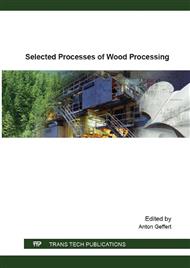p.38
p.44
p.50
p.59
p.65
p.77
p.82
p.90
p.96
Formation of Emission from Combustion of Biomass in Small Heat Source
Abstract:
The fireplace combustion of wood is a significant and largely unregulated source of emission pollution. Therefore article deals about experimental measurements of emission parameters from combustion of biomass in small heat sources. The objectives of the present work are to analyse basic pollutants arising from the combustion process and to define measurement technique applied to characterise particle emissions from biomass combustion. Gravimetric methods are among the most accurate and precise methods of quantitative analysis and therefore was selected for measurement of solid emissions. Conclusion of work focus on evaluation of the tests results, especially concentration of particulate matter (PM) from the combustion of briquettes made from different kinds of biomass. During the combustion of certain briquettes was recorded a high amount of particulate matter and analyser switched to “stand by” mode in several cases. The results indicate that higher concentration of PM was determined in the case of briquettes made from phytomass in comparison to briquettes made of woody biomass.
Info:
Periodical:
Pages:
65-73
Citation:
Online since:
April 2016
Authors:
Keywords:
Price:
Сopyright:
© 2016 Trans Tech Publications Ltd. All Rights Reserved
Share:
Citation:


